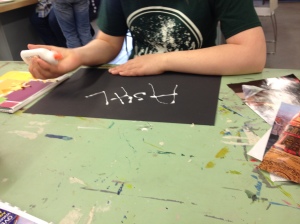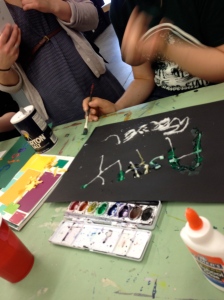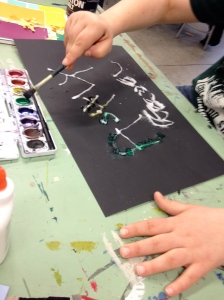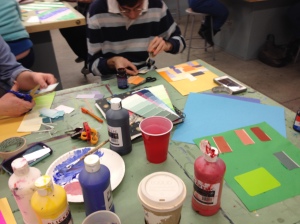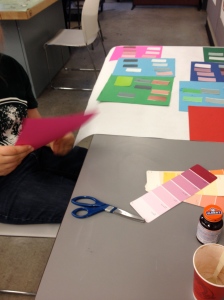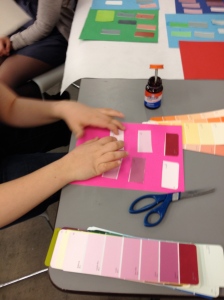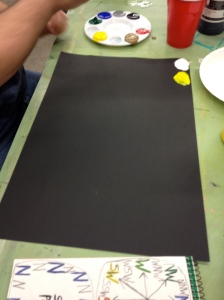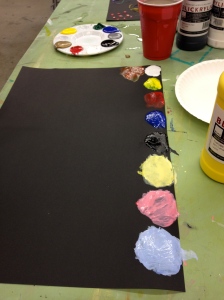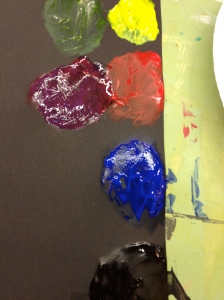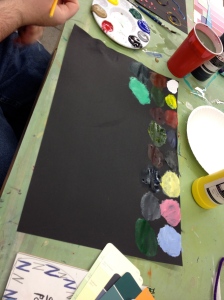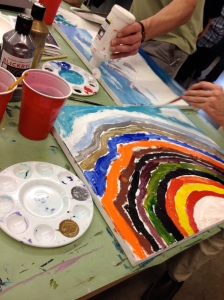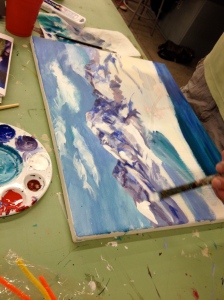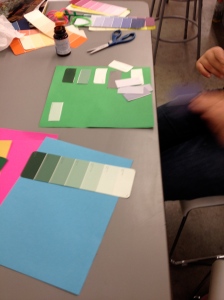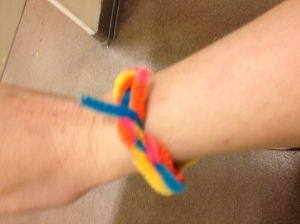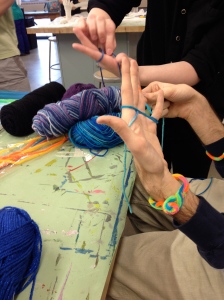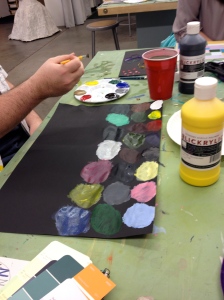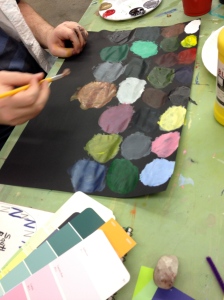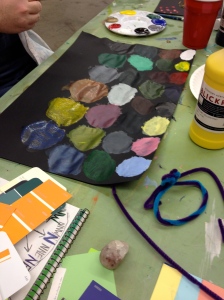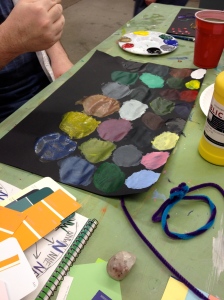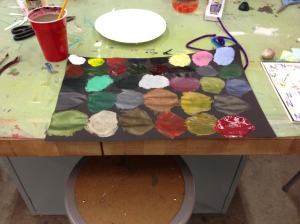Color Collage!
Day 5, March 11, 2015
Lesson Description:
Students will use paint chips and acrylic paint to create a color collage, focusing on symbolism of colors.
This lesson is important for students because if helps the students make connections between their own emotions and their own color choices. Making these connections and evaluating them exercises higher-level thinking for critical learning.
These students are interested in including a variety of colors in their art, however, neither of them have really incorporated the meanings of color into their color use. Since mixing colors and cut and paste are activities both students are already comfortable with, this gives them a way to explore color meaning without the intimidation of a more formal color lesson.
Key Concepts
Color, Collage, Emotion, Meaning, Symbolism
Enduring Understanding
-Color can influence and represent emotion
Objectives
- Using various colors for reference, in their sketchbook, the student will be able to brainstorm connections between the color and emotion. (Concept/ Ideation)
- Given brainstorming time and their sketchbook, the students will be able to create a list of emotions for inspiration. (Concept/ Ideation)
- By creating a collage of colors, the student will be able to produce an abstract artwork that represents an emotion. (Expressive features/ characteristics of art)
- Given images of symbols from different cultures, the student will be able to identify symbolism attached to colors. (History/ culture)
- Given Acrylic paint and paint chips, the student will be able to create a color collage. (Art materials/ technique)
- In their sketchbook, reviewing a list of emotions, the student will be able to identify the emotions they portrayed. (Reflection/ Assessment)
Skills
Color mixing, visually reading images, attaching emotion to color
Art Focus (content)
Color symbolism, Emotion, Abstract Art
See what we did on our last day together…
To start out, we laid a few images and multiple paint chips on the table to start a discussion about colors and their meaning.
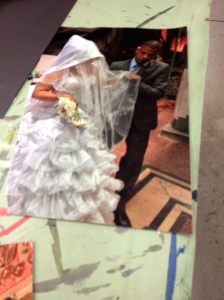
When looking at this photo of a bride, we asked what her white dress is supposed to mean. Ashley and Nick both agreed the white is meant to let you know who the bride is!
When looking at this room, Nick noticed there is quite a lot of red and gold. Nick hypothesized that the red was meant to make the room feel “lovely” and the gold is meant to make the room feel “expensive and rich.”
After the discussion, Nicole demonstrated salt painting.
We each wrote our names with glue, poured salt on the glue, and then used water colors to paint the words.
Everyone chose colors that represent themselves.
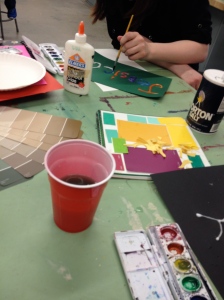
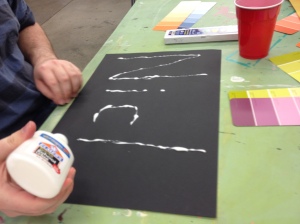
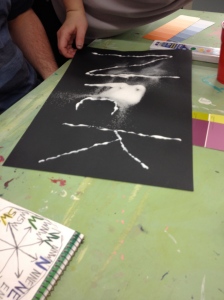 Here Nick is pouring the salt on the glue.
Here Nick is pouring the salt on the glue.
At first, when Nick was painting his letters, he was brushing very hard, which moved the salt and glue around. Nick experimented with a few other ways to paint with the water colors, when he saw Nicole just tap her brush to the salt, the salt immediately absorbed the water color paint! After that, Nick used that technique!
Nick chose to paint his name using primary colors because blue is his favorite, and with primary colors, you can make any other color.
Ashley wrote her fist and last name with glue, and chose gold and green to color her name to represent her love of the CSU Basketball team.
After completing their Salt-Art, Nick wanted to paint with acrylic on black paper, Ashley wanted to work on her color collage, and Chris came to join us!
Nick conducted an experiment similar to his color collage, he mixed all his favorite colors, but this time painted on black paper so he could discover which ones showed up the best.
Chris and Jonathan brought their paintings over to join us, Chris was painting a rainbow.
During Ashley;s collaging, she began intentionally choosing colors that were in the same tonal range as her background papers.
Chris practiced hand knitting and bracelet making with pipe cleaners.
Nick finished his painting with a full array of colorful mandala shapes.
In Nick’s repeated motif of circles, we see him demonstrating Rhoda Kellogg’s theory of stages, the Mandala stage.
